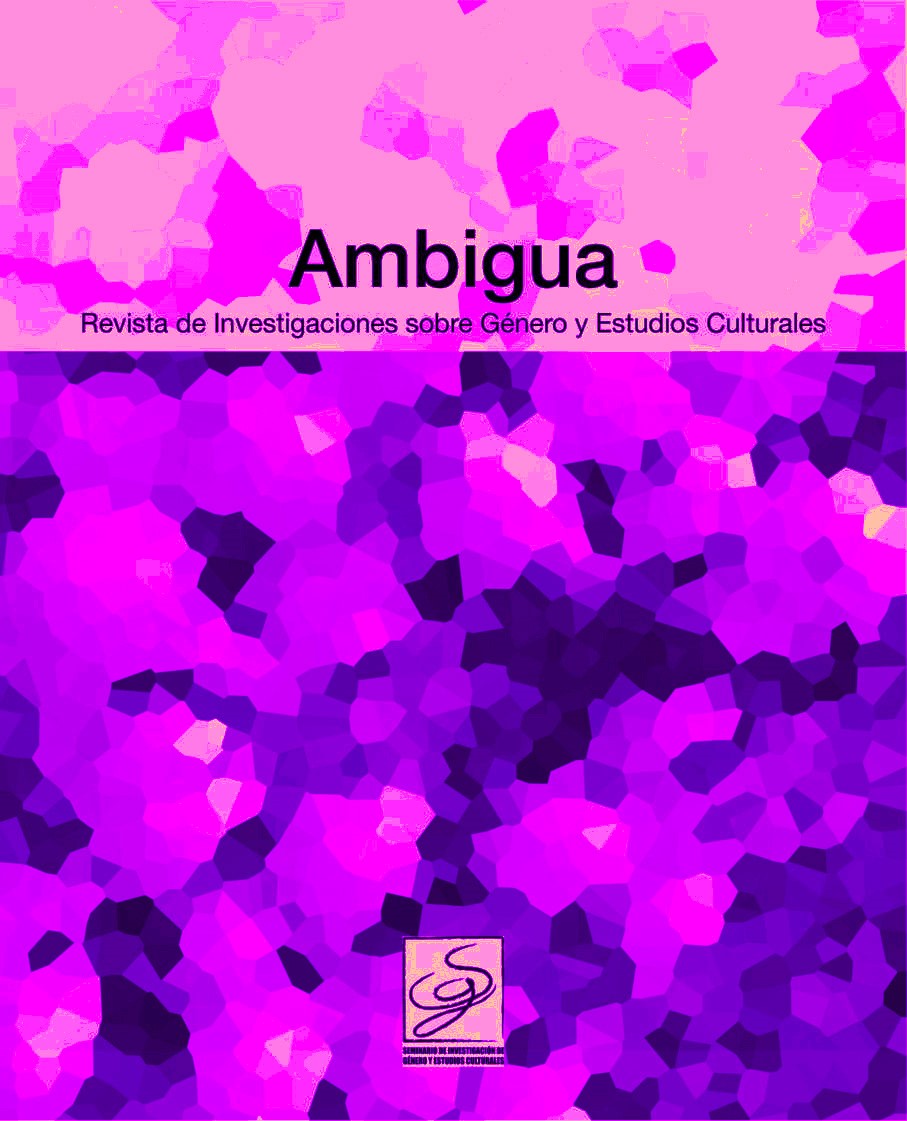Inclusive education and gender perspective in ELE classrooms: a proposal for material analysis.
DOI:
https://doi.org/10.46661/ambigua.10666Keywords:
didactics, Spanish, manuals, gender perspective, ChineAbstract
This paper offers a proposal for analyzing manuals from a gender perspective, applicable to teaching materials for Spanish as a Foreign Language (ELE). Based on the principles of inclusive education promoted by various international organizations and drawing on my personal experience as a Spanish teacher in China, an application of this analysis scheme is provided for the most widely used ELE manual in the Asian country, Español moderno, published by Shangwu Publishing House.
Downloads
References
APPLE, Michael W. Ideology and curriculum. Londres: Routledge, 2004. https://doi.org/10.4324/9780203487563
AA. VV. "Competencia intercultural". Diccionario de términos clave de ELE. Instituto Cervantes, 2008. https://cvc.cervantes.es/ensenanza/biblioteca_ele/diccio_ele/diccionario/compintercult.htm
BEGA GONZÁLEZ, Michel. "Dificultades metodológicas de los estudiantes sinohablantes de español como lengua extranjera". Onomázein 32 (diciembre de 2015): 227-238. Santiago de Chile: Fontificia Universidad Católica de Chile. https://doi.org/10.7764/onomazein.32.13
CONSEJO DE EUROPA (2002). Marco común europeo de referencia para las lenguas: aprendizaje, enseñanza, evaluación. Instituto Cervantes y Anaya. http://cvc.cervantes.es/obref/marco
DONG, Yansheng y LIU, Jian. Español Moderno (Tomo 1) Beijing: Editorial Enseñanza e investigación de lenguas extranjeras, 2014.
EZEIZA RAMOS, Joseba. "Analizar y comprender los materiales de enseñanza en perspectiva profesional: algunas claves para la formación del profesorado". Marco ELE 9, 2009.
EZQUERRA, Raimundo. "Análisis de métodos para la enseñanza de español". Asociación Europea de Profesores de Español (AEPE) 11, 31-46, 1974.
FERNÁNDEZ LÓPEZ, María del Carmen. "Principios y criterios para el análisis de materiales didácticos". Vademécum para la formación de profesores. Enseñar español como segunda lengua (L2) / lengua extranjera (LE), editado por J. Sánchez Lobato e I. Santos Gargallo, 715-734. Madrid: SGEL, 2004.
FERNÁNDEZ LÓPEZ, María del Carmen. "Análisis de manuales y materiales didáticos". Maual del profesor de ELE, editado por Cestero Mancera, Ana María y Penadés Martínez, Inmaculada, 693-729. Madrid: SGEL, 2017.
FUENTES CALVO, Manuel Jesús. Trabajo de Fin de Máster: Perspectiva de género en la enseñanza del chino como lengua extranjera . Análisis de materiales y propuesta didáctica. Universitat Autònoma de Barcelona, 2022.
INSTITUTO CERVANTES. Plan curricular del Instituto Cervantes. Madrid: Instituto Cervantes, 1994.
INSTITUTO CERVANTES. El español: una lengua viva. Informe 2023. Madrid, Instituto Cervantes, 2023. https://cvc.cervantes.es/lengua/anuario/anuario_23/informes_ic/p01.htm
NACIONES UNIDAS. Guía para el uso del lenguaje inclusivo en cuanto al género. Organización de las Naciones Unidas, 2019. https://www.un.org/es/gender-inclusive-language/guidelines.shtml
SLEETER, Christine E. and GRANT, Carl A. Making Choices for Multicultural Education: Five Approaches to Race, Class and Gender. Wiley, 2007.
TIEDONG, Yang. Metodología y manuales en la enseñanza de español a sinohablantes. Universidad de Tecnología de Mongolia Interior, China, 2013.
UNESCO. Educación 2030: Declaración de Incheon y Marco de Acción para la Realización del Objetivo de Desarrollo Sotenible 4: Garantizar una educación inclusiva y equitativa de calidad y promover oportunidades de aprendizaje permanente para todos. UNESCO, 2016.
UNESCO. Guía para asegurar la inclusión y la equidad en educación. París: UNESCO, 2017.
Downloads
Published
How to Cite
Issue
Section
License
Copyright (c) 2024 Natalia Muñoz Maya

This work is licensed under a Creative Commons Attribution-NonCommercial-ShareAlike 4.0 International License.
The authors agree with the following:
1. Authors retain copyright and grant the journal right of first publication with the work simultaneously licensed under a license Attribution-NonCommercial-ShareAlike 4.0 International (CC BY-NC-SA 4.0) that allows others to share the work with an acknowledgement of the work's authorship and initial publication in this journal.
2. Authors are able to enter into separate, additional contractual arrangements for the non-exclusive distribution of the journal's published version of the work (e.g., post it to an institutional repository or publish it in a book), with an acknowledgement of its initial publication in this journal.
3. Authors are permitted and encouraged to post their work online (e.g., in institutional repositories or on their website) prior to and during the submission process, as it can lead to productive exchanges, as well as earlier and greater citation of published work (See The Effect of Open Access).









